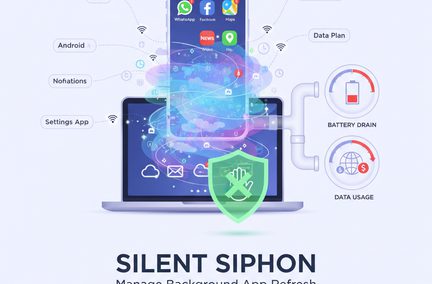How to Protect Your Computer from Malware
Oct 15, 2025 | Home Technology, Helpful Tips, Cyber Security

You’re trucking right along on your computer, working or playing, when suddenly an ominous message flashes on the screen that your system has been attacked and possibly hijacked. How? What just happened? You’ve likely become the latest victim of malware.
What Is Malware?
Short for “malicious software,” malware refers to computer programs designed to harm, exploit, or gain unauthorized access to computer systems. These threats come in many forms, each with distinct functionality and methods of spreading across networks and devices. Understanding how malicious software infiltrates our devices is crucial for maintaining strong cybersecurity in today’s connected world. Malware attacks cost individuals and businesses billions of dollars annually, making awareness of these cyber threats more important than ever.
Common Types of Malware
Understanding the different types of malware helps you recognize potential threats.
- Computer viruses attach themselves to legitimate files and self-replicate when those files are executed, spreading from one infected device to another. Trojans, or Trojan horse programs, disguise themselves as legitimate software while secretly performing malicious activities in the background.
- Ransomware attacks have become increasingly common, where malicious code encrypts your files and demands payment, often in cryptocurrency, to restore access. Spyware monitors your activity and steals sensitive information, while keyloggers specifically record keystrokes to capture passwords and credit card numbers.
- Adware floods your web browser with unwanted pop-up ads and redirects you to malicious websites. Rootkits hide deep within your operating system, giving hackers persistent backdoor access. Meanwhile, botnets turn your device into a zombie computer that cybercriminals control remotely to launch DDoS attacks or perform cryptojacking, using your computer’s resources for unauthorized cryptomining.
- Fileless malware represents a newer threat that operates in your computer’s memory without leaving traditional executable files, making detection more challenging.
How Malware Spreads
Social Engineering and Phishing
Social engineering remains one of the most effective distribution methods. Phishing emails trick users into clicking links or downloading email attachments that contain malicious software. These phishing attacks often impersonate trusted organizations like Microsoft, Apple, or other well-known tech companies, creating a sense of urgency to make victims act without thinking.
A typical scam might claim your account has been compromised, pressuring you to click a link that leads to a fake login page designed to steal data. Once hackers gain access to your credentials, they can infiltrate multiple accounts, potentially leading to identity theft or data breaches. Remember that legitimate companies typically don’t send messages like that and will normally contact you through other channels if they need to reach you.
Exploiting Vulnerabilities
Cybercriminals constantly search for vulnerabilities in software, apps, and operating system components. Unpatched security holes in your system provide an easy entryway for malware infection. Keeping all security software updated is critical. To help with this, vendors regularly release patches to fix new weaknesses.
Avoid this common pitfall by consistently updating your software to the latest version and downloading new security patches.
Network-Based Distribution
Logging onto public Wi-Fi can be risky. Public Wi-Fi networks typically do not offer proper encryption and can expose mobile devices and computers to cyberattacks. Attackers can intercept data or distribute malware to connected devices. When compromised, remote access tools give criminals complete control over your system.
Even visiting compromised websites can trigger drive-by downloads that install malware without your knowledge. Some attacks specifically target Android devices through malicious apps in unofficial app stores.
Protecting Against Malware
Protect your computer by installing comprehensive malware protection through antivirus software and anti-malware tools that provide real-time scanning of your system. Modern security solutions use threat intelligence to identify and block new threats before they cause damage.
Configure your device’s firewalls to monitor incoming and outgoing traffic, blocking suspicious connections. Enable multi-factor authentication wherever possible to add an extra security layer beyond strong passwords. This can often be easily done through clicking a few buttons.
Best Practices
Always maintain regular backups of sensitive data on separate devices or cloud storage to ensure you can recover your files after ransomware attacks without paying criminals.
Be skeptical of unexpected email attachments and verify the sender’s authenticity before clicking links. Avoid downloading apps from untrusted sources and only install software from official vendors like Microsoft or Apple app stores.
Consider using a VPN when connecting to public Wi-Fi to encrypt your traffic and prevent eavesdropping. Keep all software updated, including your operating system, web browser, and installed applications.
Recovery and Response
If you suspect a malware infection, disconnect from the internet immediately to prevent further data breaches or the malware from spreading to other devices on your network. Run a full system scan with updated security software and consult cybersecurity professionals for severe infections.
Monitor your accounts for suspicious activity, especially after any potential phishing attacks. Change passwords from a clean device, and watch for signs like unexpected redirects, slow system performance, or unusual pop-up ads.
Third Party Protection and Restoration Software
If, in spite of all your effots, you still fall prey to a malware attack, here are some suggestions of third party software that can help you recover.
Acronis Cyber Protect
Acronis offers a unified platform combining cybersecurity, data backup, and disaster recovery to restore affected systems quickly and securely. It provides automated backups, AI-powered anti-malware defenses, and centralized management for small to large enterprises.
Arete Incident Response (Arete IR)
Arete specializes in cyber incident response, providing expert-level forensics, containment, and system restoration after malware or ransomware incidents. Their services often include negotiations, ransomware decryption where possible, and post-incident hardening.
Ontrack Data Recovery
Ontrack offers data recovery and ransomware remediation services that focus on decrypting or restoring files, repairing storage media, and recovering business data from encrypted systems. They support both corporate and individual clients globally, and specialize in ransomware data recovery without compromising integrity.
The Wrap
Malware attacks continue evolving as cybercriminals develop new techniques to hijack systems and steal data. Understanding how these threats distribute themselves and implementing robust cybersecurity practices can significantly reduce your risk of becoming a victim. Stay vigilant, keep your security solutions updated, and always think twice before clicking suspicious links or downloading unfamiliar files. Your sensitive information depends on it.
- malware
- cyberattacks
- cybersecurity







